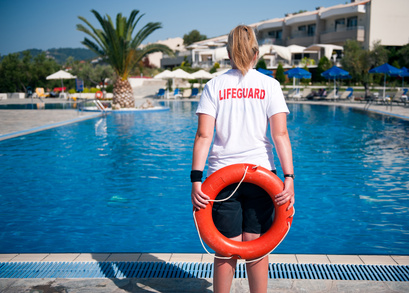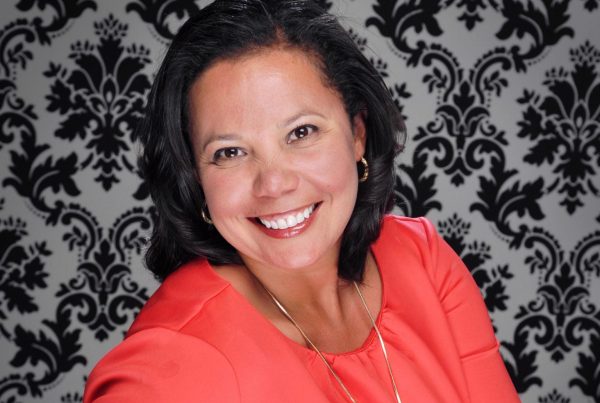
The lifeguard assesses for signs of a struggling swimmer by relentlessly scanning the horizon back and forth, hour after hour. Even if no life was saved that day, the lifeguard takes comfort knowing that she was vigilant, and no harm occurred on her watch.
But what if this same lifeguard was distracted by the numerous people on the beach and lost sight of her primary purpose to remain vigilant, and a young child who was struggling to stay afloat went down for the last time. What would the consequence be? A child would die.
In the clinical setting, “failure to rescue” represents the tragic consequences that can occur when a nurse fails to detect a change in patient status until it is too late.
This responsibility must be soberly and clearly understood by students. It is the nurse, not the primary care provider who is at the patient’s bedside 24/7.
Trending to Rescue
Just as a lifeguard is looking for a person in possible crisis, the professional nurse does the same thing by identifying the most likely/worst possible complication for every patient and assesses and TRENDS all relevant clinical data to determine if EARLY signs of a potential problem may be present.
If a problem becomes apparent, the nurse must also have a plan of interventions that will complete the “rescue” successfully and save this patient’s life. When both lifeguard and professional nurse remain vigilant, engaged, and aware of the potential for a life-threatening crisis every time they work, they have the power and potential to save a human life.
Proactive vs. Reactive Practice
A distinction between a novice and more experienced nurse is that a more experienced nurse ANTICIPATES potential problems, recognizes the significance of clinical cues, and practices PROACTIVELY to prevent a possible patient complication (Levett-Jones et al., 2010).
A novice nurse tends to practice REACTIVELY, not anticipating potential problems and reacting to them after they have already developed (Levett-Jones et al., 2010). The lack of or poor clinical reasoning skills by the novice nurse contributes directly to adverse patient outcomes that can progress to a bad outcome and even patient death.
Questions Every Nurse Must Be Able to Answer
When analyzing a new graduate’s ability to think critically, especially in the context of a change of status, del Bueno (2005) identified the following four questions that must be answered so that a change of status is RECOGNIZED by the nurse. Following each question are additional subtopics that will further practically situate this content:
Can the nurse recognize there is a problem?
Until the problem is recognized, no action will be taken by the nurse. To recognize a problem, the nurse must do the following:
- Recognize RELEVANT clinical data.
- Identify medical/nursing PRIORITY.
- Identify what is the most likely WORST POSSIBLE COMPLICATION for your patient.
- Intentional vigilance. LOOKING for this complication and trending over time all RELEVANT clinical data and required assessments.
Can the nurse manage the problem safely and effectively, recognizing scope of practice?
- Proper nursing interventions initiated based on current problem once identified.
Does the nurse have a relative sense of URGENCY?
- Lack of clinical experience is a barrier for the student to develop this sense of urgency but will come in time. I have seen new nurses have a patient with a status change of sepsis, yet have no sense of urgency when his BP has dropped to 70/30!
Does the nurse take the right action for the right reason?
- RATIONALE for nursing/medical interventions once the problem is identified are able to be stated.
- Nurse contacts the physician promptly to initiate needed interventions.
del Bueno’s research identified the importance of a nurse’s ability to RECOGNIZE a problem before rescue can take place. It is only when a problem is recognized that the nurse will intervene and do something about it.
Rescue Made Practical
I have integrated the importance of nurse vigilance and rescue as part of my template of 12 specific clinical reasoning questions I have created. Questions 7,8, & 9 make this important nurse thinking skill practical:
7. What is the worst possible/most likely complication(s) to anticipate based on the primary problem?
8. What nursing assessments will identify this complication EARLY if it develops?
9. What nursing interventions will you initiate if this complication develops?
In Closing
In the clinical setting, use these three questions to allow students to grasp the essence of nurse vigilance and what is expected in the clinical setting to provide safe patient care. These questions were derived from my own clinical practice and reflect not only how I approach nursing but how experienced nurses incorporate this essential “nurse thinking” skill into their practice.
My template of all 12 clinical reasoning questions is available as a FREE download. If you have second year/advanced clinical, I have had faculty use this template successfully as the primary tool to establish a plan of care. It represents the essence of “nurse thinking” that can transition students successfully to real world clinical practice.
By having your students embrace their role as a lifeguard, they will be able to see the responsibility of a professional nurse in a new light and empower them to be lifesavers when a patient status begins to change. The ability to save a life and make a difference is what motivates most students to enter nursing. Let’s remember to keep this emphasis front and center in all that is done in nursing education!
Comment Question:
What strategies have you found effective to emphasize vigilance and the role of the professional nurse as lifeguard?
Comment below and let the conversation begin!
References
- del Bueno, D. (2005). A crisis in critical thinking. Nursing Education Perspectives, 26(5), 278–282.
- Levett-Jones, T., Hoffman, K., Dempsey, J., Yeun-Sim Jeong, S., Noble, D., Norton, C. Hickey, N. (2010). The ‘five rights’ of clinical reasoning: An educational model to enhance nursing students’ ability to identify and manage clinically ‘at risk’ patients. Nurse Education Today, 30, 515–520.
Keith Rischer – Ph.D., RN, CCRN, CEN
As a nurse with over 35 years of experience who remained in practice as an educator, I’ve witnessed the gap between how nursing is taught and how it is practiced, and I decided to do something about it! Read more…
The Ultimate Solution to Develop Clinical Judgment Skills
KeithRN’s Think Like a Nurse Membership
Access exclusive active learning resources for faculty and students, including KeithRN Case Studies, making it your go-to resource.



